 An American in Paris was made in 1951 at the very peak of the Hollywood studio system and the pinnacle of Gene Kelly’s artistic career. It was the perfect blend of art and technique in classic American movie-making. MGM had among its employees all the veteran craftspeople and artists that could produce such a film. And as with many great movies, the back-story is as fascinating as the movie itself. In 1950 as the first plans were being made for the film, MGM, and indeed the entire Hollywood film industry, was in transition. Television was siphoning off viewers and a court-imposed consent decree required studios to sell off their movie theaters. Cost-cutting was now the mantra, and MGM’s expensive musicals were not viewed favorably by its new production head Dore Schary nor by the corporate offices at Loew’s in New York. The old lion Louis B. Mayer, still in charge of studio operations, supported musicals and the planned An American in Paris, but it took a lot of pleading and persuasive pitches to gain the approval of Schary, and then even more to Loew’s corporate head Nick Schenck and his board. And still the threat of budget cuts loomed over the entire production.
An American in Paris was made in 1951 at the very peak of the Hollywood studio system and the pinnacle of Gene Kelly’s artistic career. It was the perfect blend of art and technique in classic American movie-making. MGM had among its employees all the veteran craftspeople and artists that could produce such a film. And as with many great movies, the back-story is as fascinating as the movie itself. In 1950 as the first plans were being made for the film, MGM, and indeed the entire Hollywood film industry, was in transition. Television was siphoning off viewers and a court-imposed consent decree required studios to sell off their movie theaters. Cost-cutting was now the mantra, and MGM’s expensive musicals were not viewed favorably by its new production head Dore Schary nor by the corporate offices at Loew’s in New York. The old lion Louis B. Mayer, still in charge of studio operations, supported musicals and the planned An American in Paris, but it took a lot of pleading and persuasive pitches to gain the approval of Schary, and then even more to Loew’s corporate head Nick Schenck and his board. And still the threat of budget cuts loomed over the entire production.
This post is part of Silver Scenes’ MGM Bologathon. My post on An American in Paris was previously published in 2012 as part of the Gene Kelly Centennial Blogathon. 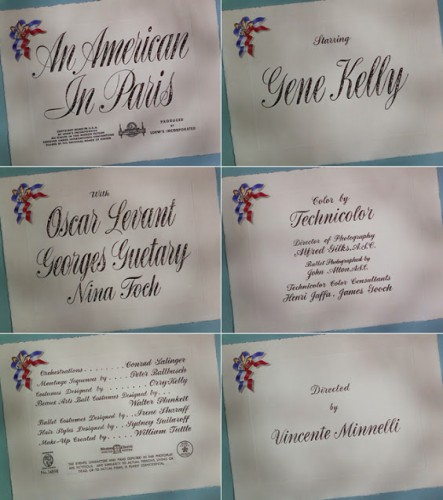
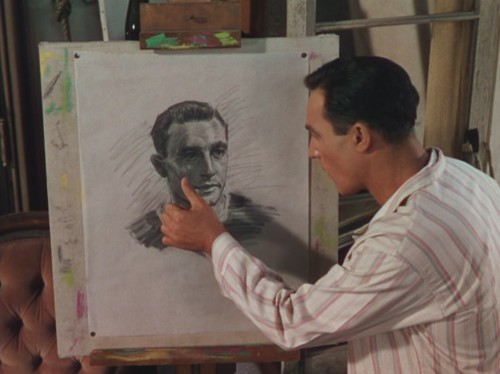
his own image or in his ability to produce a self-portrait, which he will soon to deface
The decision by Freed, Minnelli, and Gene Kelly to include a 17 minute long dance sequence was bold and risky. Regardless of the success of The Red Shoes, nothing of that scope had been done in an American film. Further, the ballet was to be a realization on film of the artistic works of Impressionist and Post-Impressionistic painters. This feature would not only guide the nature of the choreography, but also of the set designs, cinematography, action sequences, and costumes. The ballet scene would be the heart and soul of the film. The music, of course, would be based on the haunting score of George Gershwin’s An American in Paris symphony, with the story for the film by Alan Jay Lerner. 
Other than Gene Kelly, the question of who should be cast for An American in Paris was not apparent. While MGM had several great female dancers, Kelly was convinced that a fresh faced and a native Frenchwoman should be cast as Lise Bouvier. And for that role he had seen a 19 year old French ballerina named Leslie Caron that he wanted for the part. This too was a risky move – a major role for a young woman who had never acted. In continuing with the relatively unknown cast members, Georges Guetary, a French Music Hall singer, was cast as Henri Baurel. For the fellow American expat and starving musician-neighbor, the inspired choice was the concert pianist and wit Oscar Levant, playing the role of Adam Cook. Another fortuitous decision was bringing in costume designer Irene Sharaff. Sharaff was a Broadway designer but had worked for a spell in Hollywood. Minnelli convinced her to come back from New York to design some 300 costumes for the ballet. While working on the costumes, Sharaff also started designing sketches for what the sets might look like for the various artist-inspired scenes. These sketches in fact were adapted by art director Preston Ames for the sets, which Ames, a former architecture student in Paris, could quickly envision. The sets would be based on the styles of Raoul Dufy; Henri Rousseau; Piere Auguste Renoir; Maurice Utrillo; Vincent Van Gogh; and Henri de Toulouse-Lautrec. Not a bad set of artists from which to draw inspiration. But how would the ballet transition from one artist-styled set to the next?
Those transitions indeed became a high-point in Hollywood film arts and crafst.Some 30 painters worked six weeks to paint the backgrounds and sets. Irene Sharaff also came up with the idea of using certain dancers, characters she called Furies for the women and Pompiers for the men. The Furies were dressed all in red ballet outfits and the Pompiers were dressed as traditional French firemen, with their brass helmets but also adorned in a military-inspired costume. Together they served as the “bridge” from one scene to the next, luring Kelly as Jerry Mulligan to pursue the ever-escaping Caron as Lise Bouvier. These transitions were also accomplished by using a “match-cutting” filming technique whereby the action of the dancer is exactly matched from the end of one scene to the beginning of the next.

As the film opens, each character as played by Gene Kelly, Oscar Levant and Georges Guetary narrates that the happy characters depicted on screen, “are not me.” Gene Kelly as Jerry Mulligan is a struggling artist that stayed in Paris after WWII. He sells his paintings (sometimes) on a street in Montmartre, where a rich widow discovers him and decides to support him (with strings attached). Oscar Levant as Adam Cook is a struggling pianist, the “oldest former child prodigy.” In a very clever later scene Levant as Cook fantasizes about playing in a symphony, which he is also shown conducting while simultaneously playing several instruments. This take-off of an old Buster Keaton film is still funny, especially since Levant being the only one that truly appreciates himself, also fills the audience with himselves. Georges Guetary as Henri Baurel is the successful singer and entertainer, now worrying about getting older, but providing the yet unknown rival for the love of Lise. His singing performance of “I’ll Build a Stairway to Paradise”, in classic Hollywood show-girls-down-the-stairs style, is a highlight of the movie. 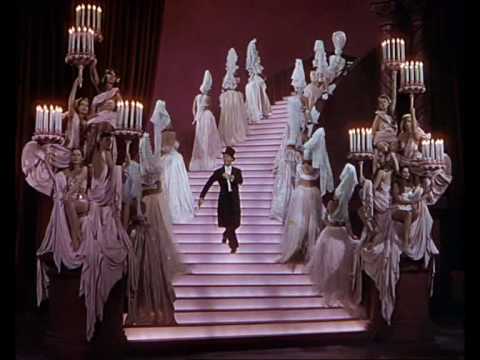 A later dual number of Kelly and Guetary in “S’Wonderful,” where they are still ignorant of their rivalry, is pure joy. But Kelly as Jerry Mulligan is deeply in love with Caron as Lise Bouvier, made beautifully obvious in the “Our Love is Here to Stay” number, their song and dance on the banks of the Seine, here amazingly duplicated on a painted set built around one of the those old MGM “cycloramas” is pure joy. Another scene provides laughs as Levant, sitting between Jerry and Henri while they each describe Lise and how much they love her, oblivious of each other’s common object of affection, all the while nervously smokes two cigarettes and chugs several coffees and whiskies.
A later dual number of Kelly and Guetary in “S’Wonderful,” where they are still ignorant of their rivalry, is pure joy. But Kelly as Jerry Mulligan is deeply in love with Caron as Lise Bouvier, made beautifully obvious in the “Our Love is Here to Stay” number, their song and dance on the banks of the Seine, here amazingly duplicated on a painted set built around one of the those old MGM “cycloramas” is pure joy. Another scene provides laughs as Levant, sitting between Jerry and Henri while they each describe Lise and how much they love her, oblivious of each other’s common object of affection, all the while nervously smokes two cigarettes and chugs several coffees and whiskies.
A later scene is the wild Beaux Arts “Black & White” Ball, here providing a stark contrast to the disintegrating relationships of the two couples: Jerry Mulligan with patroness Milo (Nina Foch), and Henri with Lise. Henri even overhears Jerry and Lise’s tender, heart-breaking exchanges.
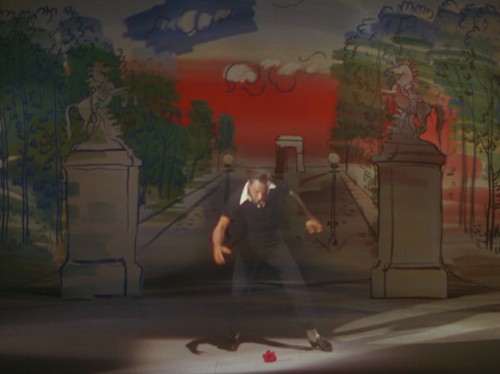
Forlorn, Jerry realizes he is just a failed artist, a stranger in a strange land. The ballet scene begins with Jerry sketching the scene of the Cheveaux de Marly, the sculpted horses flanking the Champs Elysees. He enters that sketched scene which is his ballet dream, the love of Lise symbolized by a fallen red rose. The ballet sequence will put to music and art all his hopes and fears, as he continually pursues Lise through various sets.

The opening scene in the style of Raoul Dufy’s Place de la Concorde becomes Jerry’s dream world.
The Furies, dressed in white and then red, beckon Jerry to pursue Lise. Gene Kelly as Jerry is dressed simply in form-fitting clothes, the better to appreciate his dancing and his physique.
The white furies turn to more intense red furies
The fountain at the Place de la Concorde serves as the dream dance floor to a united Jerry and Lise, dancing to George Gershwin’s exhilarating and romantic An American in Paris symphonic poem.
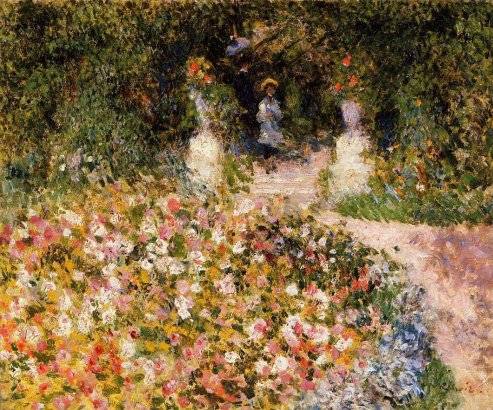
Jerry pursues Lise to the floral backdrop inspired by Pierre Auguste Renoir, and as they dance, they hold the red rose of love.  Alas, even in dreams our dreams escape us. Lise has been transformed into flowers, soon to fall from his grasp.
Alas, even in dreams our dreams escape us. Lise has been transformed into flowers, soon to fall from his grasp. 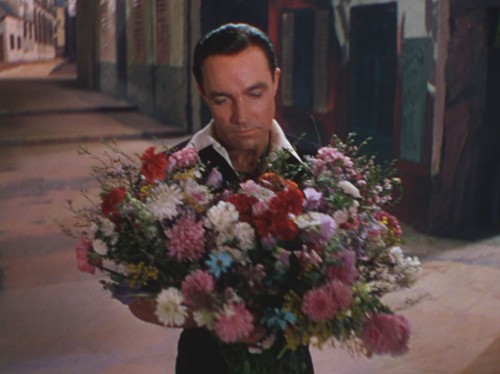 The background has now turned into the melancholy monochromatic artwork of Maurice Utrillo. Gershwin’s music is also changing to American jazz-inspired melodies.
The background has now turned into the melancholy monochromatic artwork of Maurice Utrillo. Gershwin’s music is also changing to American jazz-inspired melodies.  Jerry becomes homesick, as had Gershwin in Paris, which inspired him to add the sounds of American blues and jazz into his musical composition.
Jerry becomes homesick, as had Gershwin in Paris, which inspired him to add the sounds of American blues and jazz into his musical composition. 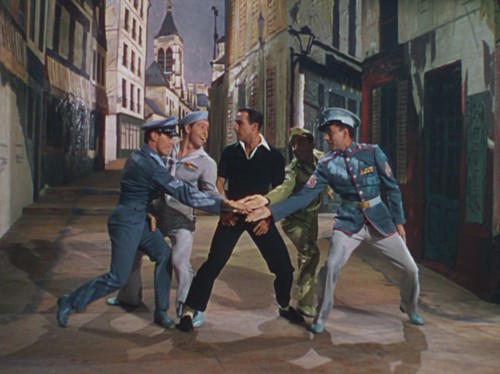 Jerry’s homesickness is symbolized by his former side-kicks, the U.S. military service-men shown in the scene. They are not quite tangible, the artist’s paint still fresh on their uniforms.
Jerry’s homesickness is symbolized by his former side-kicks, the U.S. military service-men shown in the scene. They are not quite tangible, the artist’s paint still fresh on their uniforms.
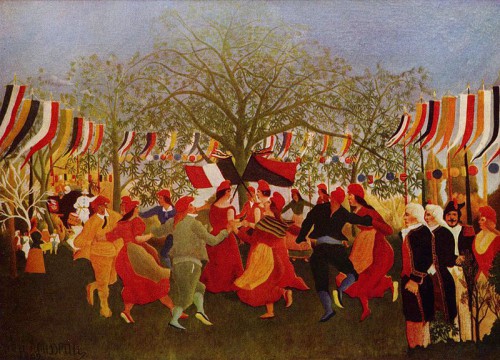
The scene turns to the artwork of Henri Rousseau: primitive; wild; and exuberant. Jerry’s service-men are now in dressed in cheerful suits, as is he, with the Pompiers now leading them forward in dance. And now Lise will reappear. 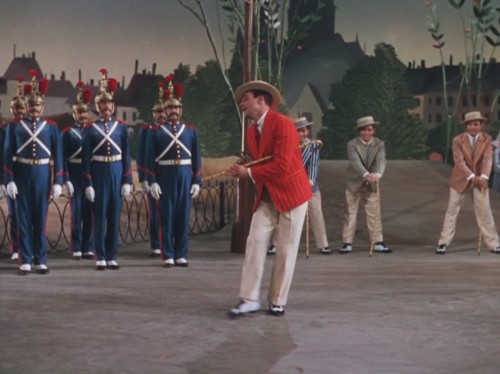
 Here now we enter the more turbulent world of Vincent Van Gogh, the skies of the backdrops painted in swirled colors.
Here now we enter the more turbulent world of Vincent Van Gogh, the skies of the backdrops painted in swirled colors.

Only this dream turns into his real dream, and Lise returns, running up the stairs of the real (set) stairs of Montmartre. The final kiss says it all, our love is here to stay.
The film ends with a title card stating: Made in Hollywood, California. And so it was, where it also received 8 Academy Award nominations and won 6, though none for Minnelli. It won for Best Costume Design for Irene Sharaff, Orry-Kelly and Walter Plunkett. Yet Walter Plunkett, who designed the costumes for the Black & White Ball scene, must have found it ironic, he who had designed Gone With the Wind, the two Little Women ( and the subsequent Singing in the Rain, Diane, Raintree Countee), among scores of others. This would be his only Oscar, given for a relatively minor designing job.
Today it’s Singing in the Rain that is the crowd favorite and receives the “best musical ever made” accolades. No doubt that Singing in the Rain is the most cheerful and fun movie there is to watch, and the dancing is also outstanding. An American in Paris seems to be considered somehow less worthy because it strove to be art. But there is no more beautiful film ever made, and its integrated combination of music, dance, art, costume, and cinematography is the pinnacle of classic Hollywood film, and a proud achievement of the MGM Studio.
Views: 2739

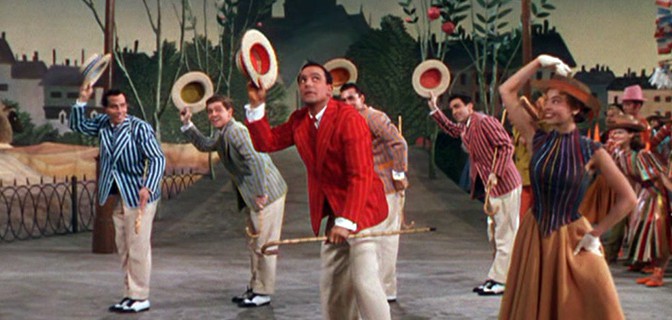

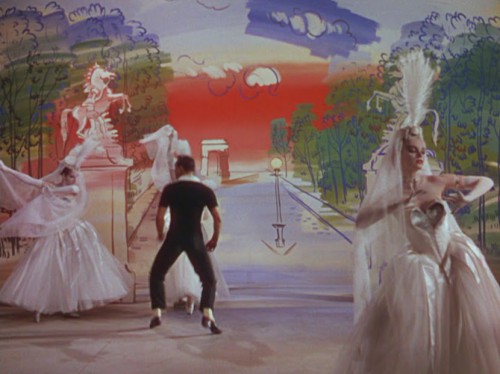
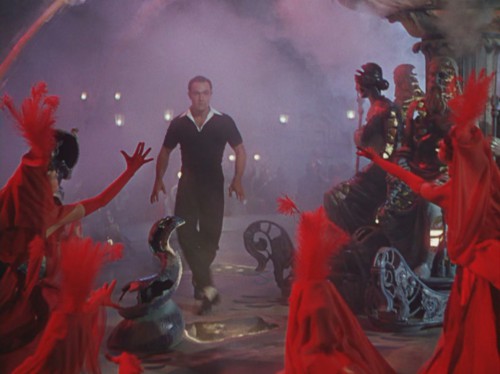
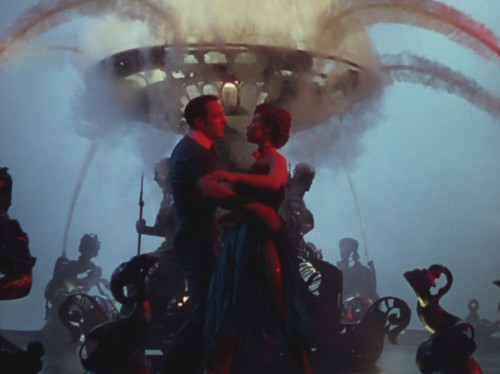



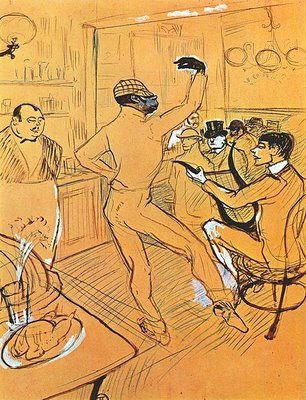
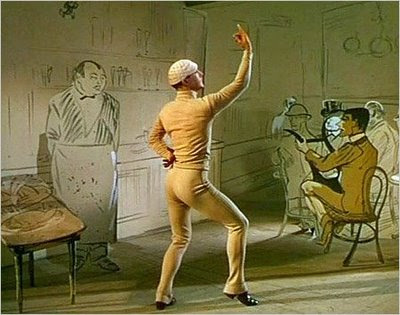
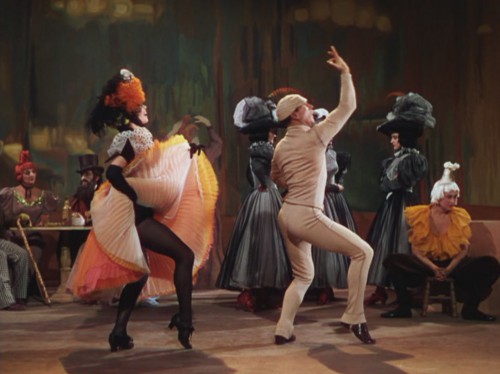
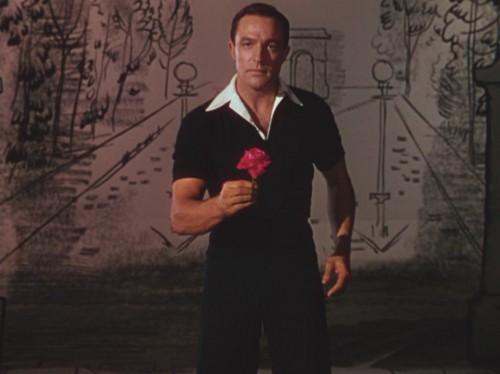

Thanks for this wonderful post, and your comparison of screen shots to the paintings that inspired them.
Just a small note: the movie ends with “Made In Hollywood, USA”
(not California). This was a new idea, added to the end title card of MGM movies for a while.
I’ve watched this movie over and over again for 40 years, since I was a teenager. It never ceases to amaze me and I notice new details every time. For example, today (12/31/23), I saw the paint smudges on the military uniforms in the ballet sequence.
Leslie Caron was one of my first movie star crushes and her skills still impress me. AIP is my favorite movie musical, Casablanca my favorite movie. Both are movies that can never be reproduced and when I saw AIP as a Broadway production about a decade ago, it did not live up to the movie at all.
Thank you for this post – it provided a whole new insight into the movie that I had never read before.
This is a great film and one can always find something new in all the art and details. And the dancing is wonderful. Thanks for your comments Joe.
I am so thankful to find this post. I love this movie. I got nice work if you can get it stuck in my head. I had to watch it again. I started really watching the art part and I wanted to know more about it and I started looking for a book about the movie and looking for this post. Thank you for the breakdown. It answered a lot of questions. It’s really beautiful. I will always treasure it!
Thank you Claudia. I’m glad you found my blog and could find out more about this outstanding movie classic.
Me too! I’m in the middle of watching AAIP right now and stopped to Google if Gene Kelly actually painted the pictures he’s trying to sell in the movie, so I’m really glad to have accidentally found this post before watching the long ballet sequence. I will be able to appreciate it even more with Mr. Esquevin’s insights. I’ve already been enthralled with Mr. Kelly’s amazingly smooth dancing & choreography and I’m only at the beginning of the scene by the Seine. Thanks so much for your insights Mr. Esquevin! Btw…I just watched GiGi yesterday and also enjoyed the song referenced by another commentator. I love and miss the old movie musicals! Such great actors and actresses in those days. Today’s “truthfulness” in movies… acting, directing, lighting, etc. just aren’t as interesting nor fun. Here’s to great old movies!
Happy that you found my post on An American In Paris. The movie is a great musical and especially the ballet scene through the artists’ backdrops. Indeed, here’s to
great old movies!
Great post. I find I like An American in Paris more each time I see it. Thanks for helping me enjoy this wonderful film even more than ever.
I’d always picked up on all of the artist-based scenery in the ballet except for the Dufy & Utrillo inspired parts. I finally got around to researching them, which led me here to your enlightening analysis.
As for whether it’s better than this or that movie, of course that’s pretty much a matter of opinion, based on various preferences. For instance, the question of the relative beauty of the female actors/singers/dancers. Leslie Caron doesn’t strike me as especially gorgeous, but then neither does Cyd Charisse, whose appearance seems to be quite appealing to many. In fact, I’d actually rate Caron higher looks-wise
Along those same lines, I finally just watched the Bandwagon after all these years of being a huge Fred Astaire fan and didnt much care for it. In fact, found it rather irritating in many ways, especially the cringeworthy triplets & hayride numbers! I was astonished to find out some consider it the ultimate in movie musicals!
In addition to the above, I found Oscar Levant annoying in Bandwagon (though I love him in American in Paris.) It also made no sense whatsoever to me that the revamped show Tony & the gang came up with–comprising such disparate elements as the (creepy) triplets, (horrible) hayride, and the (excellent) Girl Hunt ballet numbers–was supposed to be a smash hit!
However, I’m sure there are other films that I love which have similarly incomprehensible plot points (for example, just about every Astaire-Rogers film!)
A commenter above complains that Gene Kelly’s & Leslie Caron’s characters in An American in Paris have no business singing & dancing, which to me is not a problem at all. Interesting point, though. For a discussion on this, I recommend Jeanine Basinger’s The Movie Musical, which I’m reading now. She makes some interesting observations about the various ways singing & dancing in musicals is justified by the films.
Thank you for your comments Sarah Thompson. Because of the art elements discussed this musical is rather unique. It is also because of its long ballet/dance number. I think because of that it won an Oscar for Best Film.
Many consider Singing in the Rain a better musical, or Band Wagon, as you say. But I find no fault with An American in Paris, and I think it achieved its ambitious goals. I’m gratified that my blog post was helpful to you.
I have watched this movie so many times throughout my life. The wonderful thing about it is that as you age and get more perspective so too, a person can see more meaning and beauty as time goes by, reflective of your own experience. This is the truest work of art! At first I had only a beginning level of understanding the meaning in the ballet scene, but as time goes by and I see it over and over it reveals more. This is the wonder of beauty of art. It unfolds as life does. But it also is enjoyable when your watching it at first, you are so entertained by the strength and show of the dance. It appeals to all levels. Some might compare it even, to religion. I love all the casting, especially Leslie Caron, her youth adds to the innocence of a new and pure love. I too was originally drawn to Gene Kelly in Singin in the Rain, but An American in Paris is a fantastic example of Gene Kelly’s extrodinary gift. That ballet scene personifies all that a beautiful dance scene can offer, love, fluidity, fun, sexiness ; it’s got it all and then some. I can’t take my eyes off it every time!
Thank you Lisa for your wonderful appreciation for this great film. I’m glad you found the post here at Silver Screen Modes.
One needs to put the ballet in An American in Paris into the context of the time in which it was created. Though it may look daring in retrospect, the American in Paris ballet sequence is really a film equivalent to what was being done on Broadway at the time. There was nothing inherently groundbreaking about including a ballet in a musical. Rogers and Hammerstein II had done it twice before on Broadway with Oklahoma (1943) and Carousel (1945). The Red Shoes had done the same for film. What An American in Paris did was incorporate the concept into an otherwise traditional Hollywood musical. They did this with great style and panache as you noted. This was their contribution to the history of film.
Thanks for you comment Jim. Yes, Broadway had indeed had been using ballet sequences in theater. And the film Red Shoes was an inspiration for the Ballet scene in An American in Paris as I noted.The costume designer for An American
in Paris, Irene Sharaff herself came from the theater, and used the theater concept of a more unified theme for all costumes in the film, as well as the idea of the art-inspired back-drops. Nonetheless, it was the creative blend of the various talents involved in filmmaking that produced this new work of art.
I know I am a bit late in commenting but I just now came across your blog. I just saw An American In Paris on TCM for as you said the 50th time. It’s 2017 and is August and that means Summer Under The Stars on TCM. Today is Leslie Caron day. I wish I found your blog before I saw the movie again. You opened my eyes to many things. I would have watched for many of these things. I always noticed the Toulouse Latrec connection but not the others. I always thought the movie had many beautiful things about it. However, there were things I didn’t like about it. I didn’t like the casting of Nina Foch as Milo. And to be honest, I was never a fan of Leslie Caron. She was ok in this her first movie but not outstanding. I also was just ok with Georges Guetary. However, I have always loved Oscar Levant and think he was a bit wasted in this movie – his part should have been bigger. I personally think casting is the reason Singing In The Rain is considered the better movie. They said it was a risk casting the two unknowns I mentioned and it was, I think it hurt the movie. Leslie Caron isn’t particularly pretty in this movie. Why Gene Kelly liked her above all the other ballerinas he must have seen is beyond me. Georges singing and dancing is campy at best!
Also, if you listen to what TCM and the late Robert Osborne said and actual Google or Bing this movie many, many, many experts actually say The Band Wagon is the best musical ever made. I love this movie but was quite surprise to hear this. It is such a fun and entertaining movie. I adore Fred Astaire and Cyd Charisse! In my opinion Cyd Charisse was one of the most underrated female dancers in Hollywood!! She actually could have played Lise. She could have easily done it with a little help with her French accent. She was a better dancer then Caron as well. Anyway The Band Wagon is a great movie and I do see why many experts in the field consider it the best musical of all time. It’s a musical about making a musical, how appropriate.
I love An American In Paris, I don’t want to give the impression that I don’t. I have loved George Gershwin since I was old enough to listen to music! This movie was right up my ally. But, I personally thought it drags in spots. I didn’t like the I Got Rhythm Scene with the kids and I love kids, I have 2 of my own. I just didn’t like how they used that song in the movie – it is a wonderful song and wasted in this scene! I just understand why many don’t think it is the best! Another awesome musical which comes close to the top of being among the best and better for me then AAIP is GiGi.
GiGi was also a Vincent Minilli film and story written by Alan Jay Lerner just like An American In Paris was (AAIP). All of Gigi’s songs and lyrics were written by Lerner and Lowe. Many, many compare the entire score to shades and resemblance to their score of My Fair Lady , another movie I loved. Anyway, The scene with Hermine Gingold and Maurice Chevalier singing “I Remember It Well” is just so touching for old and younger dating age couples alike. GiGi set the record for 9 Academy Award wins. It won best picture for 1959!!
I copied the below information from Wikipedia:
Awards and nominations
Gigi won a record-breaking nine Academy Awards (at the 1959 Oscars ceremony); however, this record only lasted for one year, as Ben-Hur broke this record the following year with 11 Oscars. In tribute to Gigi’s domination of the Oscars, the MGM switchboard answered calls the following day with “M-Gigi-M”. Gigi, eventually along with 1987’s The Last Emperor, held the record as the film(s) with the most Academy Award wins in every category in which it was nominated, until 2003’s The Lord of the Rings: The Return of the King broke the record at the 2004 Oscars ceremony with 11 Oscar nominations and 11 Oscar wins.
Academy Awards
Best Picture (winner)
Best Director (Vincente Minnelli, winner)
Best Adapted Screenplay (Alan Jay Lerner, winner)
Best Art Direction – Set Decoration (E. Preston Ames, F. Keogh Gleason, Henry Grace, and William A. Horning, winners)
Best Cinematography (color) (Joseph Ruttenberg, winner)
Best Costume Design (Cecil Beaton, winner)
Best Film Editing (Adrienne Fazan, winner)
Best Musical Score (André Previn, winner)
Best Original Song (“Gigi” by Alan Jay Lerner and Frederick Loewe, winners)
Golden Globe Awards
Best Motion Picture – Musical or Comedy (winner)
Best Director – Motion Picture (Vincente Minnelli, winner)
Best Supporting Actress – Motion Picture (Hermione Gingold, winner)
Best Actress – Motion Picture Musical or Comedy (Leslie Caron, nominee)
Best Actor – Motion Picture Musical or Comedy (Maurice Chevalier, nominee)
Best Actor – Motion Picture Musical or Comedy (Louis Jourdan, nominee)
Other awards
Writers Guild of America Award for Best Written American Musical (Alan Jay Lerner, winner)
Directors Guild of America Award for Outstanding Directing – Feature Film (Vincente Minnelli and assistant director George Vieira, winners)
Grammy Award for Best Score Soundtrack Album for a Motion Picture, Television or Other Visual Media (André Previn, winner)
American Film Institute
AFI’s 100 Years…100 Passions -#35
AFI’s 100 Years…100 Songs
Thank Heaven for Little Girls -#56
As you can see GiGi was one heck of a Musical and movie in general!!!
There are many movies and many reasons AAIP is not the best musical of all time but it is a beautifully filmed movie and up there among the best.
Thanks for your comment Sheree. Well, An American in Paris was Gene Kelly’s favorite movie of his. He was the one that chose Leslie Caron. And yes, while she is not as beautiful as Cyd Charisse, but being French, and a great dancer, she was excellent for the role. And yes there are other great musicals, Band Wagon with Fred Astaire and Cyd Charisse is among the best, as is Carousel, though very different. As far as movie roles go, I think this was Oscar Levant’s best. Playing Gershwin’s Concerto in F while also imagining himself as the conductor and several other musicians is unforgettable. I like Gigi, but this is one I find I can only watch so many times.
I felt like I was having deja vu until I saw your note that this was posted on Modiste in 2012. 😉 I praised you then and I praise you now–you do a BEAUTIFUL job of discussing the film and really celebrating its beauty with your chosen photos. I love that you highlight the art that Gene brings to life and that this is new to many people who may have missed it while watching the film. Just fantastic, as always, my friend.
Thanks Kimberly for your comment and compliment. It’s so easy to get wrapped up in the dance and to consider the backdrops as just pretty Parisian scenery. But as you know there is always so much backstory to the production of a movie, in this case the artistic side is so fascinating and deserves to be known, and it’s all integrated with the costumes as well.
I remember that, in the first That’s Entertainment! documentary, they end with a footage of “the best musical MGM did”, and it was An American in Paris. Well, in 1974 Singin’ in the rain still didn’t have all its praises!
You wrote a great post and filled it with amazing images. I think that the classical inspirations for the ballet sequence are its biggest triumph, because the always changing scenery never let us get tired of the dance.
Don’t forget to read my contribution to the blogathon! 🙂
Greetings!
http://www.criticaretro.blogspot.com.br/2014/06/garbo-gilbert-mgm-um-triangulo-amoroso.html
Thanks for your comment Leticia. As you pointed out, many years ago MGM and others considered an American in Paris the better film. That was the one that won the Oscar. I’ll read your entry too and thanks for visiting Silver Screen Modes.
Thank you for showing how scenes in this film reflect influential French artists. I never saw that before. (Doh!) I now have a new appreciation for this film. 🙂
Thanks for your comment Silverscreenings. It’s easy to consider the backdrops as just part of the Parisian background of the film or as decor. It always adds to the pleasure of watching a film, I think, to know the efforts the artists and artisans made in creating it.
AN AMERICAN IN PARIS: THE MGM BLOGATHON | Silver Screen Modes http://t.co/6hye6BJUPs via @EMAILiT
Lovely post, Christian. It is very fashionable to criticize this film (and Kelly) today, but I am a fan. I think it comes in below Singin’ in the Rain because it lacks the strength of story and character of that film. However, as a visual and musical feast, it is magnificent. The ballet is beautiful as a work of imagination and the use of Gershwin music just adds to the beauty. Great choice for the blogathon.
Thanks for your comment FlickChick. I’m a big fan of Singing in the Rain too.Especially its inside take on early Hollywood, and its great musical numbers.
But as to its story, I would say that its scenes are really more episodic. We have collaborated into making the story. But that’s my take after seeing it 50 times, and ready to see it another 50.
I think this might be my favourite musical, and that has a lot to do with the sets, which captivated me as a child. I loved seeing the ‘on set’ scenes next to their artistic inspiration, the Toulouse-Lautrec inspiration is wonderful. Of course, Kelly’s accessible dancing was the element that tied it all together, but this is a visually harmonious film. Thank you!
Thanks for your comment girlsdofilm. It is my favorite musical, for all the reasons I mention, although there are certainly several magnicifent and
important musicals, Red Shoes, to name only one. Thanks for sharing your views.
AN AMERICAN IN PARIS: THE MGM BLOGATHON http://t.co/5t7n2mzcHk http://t.co/VlKQDcLh39
This is a really great article, Christian. You touch on the artistic influences that were incorporated into the film very well. I think An American in Paris is a beautiful film to look at, but I am not a fan of that 17-minute dance sequence (even though artistically it holds much value) at the end. I recently wrote a post about On the Town questioning Kelly’s insistence on doing soliloquy scenes. The difference between An American in Paris and On the Town from The Red Shoes is that the extended ballet sequence makes sense because Vicky Page is a ballerina in a film about ballet. Gene Kelly’s Jerry Mulligan is a painter not a dancer and Leslie Caron plays a perfume salesgirl.
Thanks for you comments Kim. Indeed Kelly did not play a dancer in the film and neither did Caron. This was true for most musicals
in fact, and by extension many people don’t like musicals because why would somebody break out in song? Anyway, I find it to be a great musical and you
have to suspend disbelief watching many movie genres.